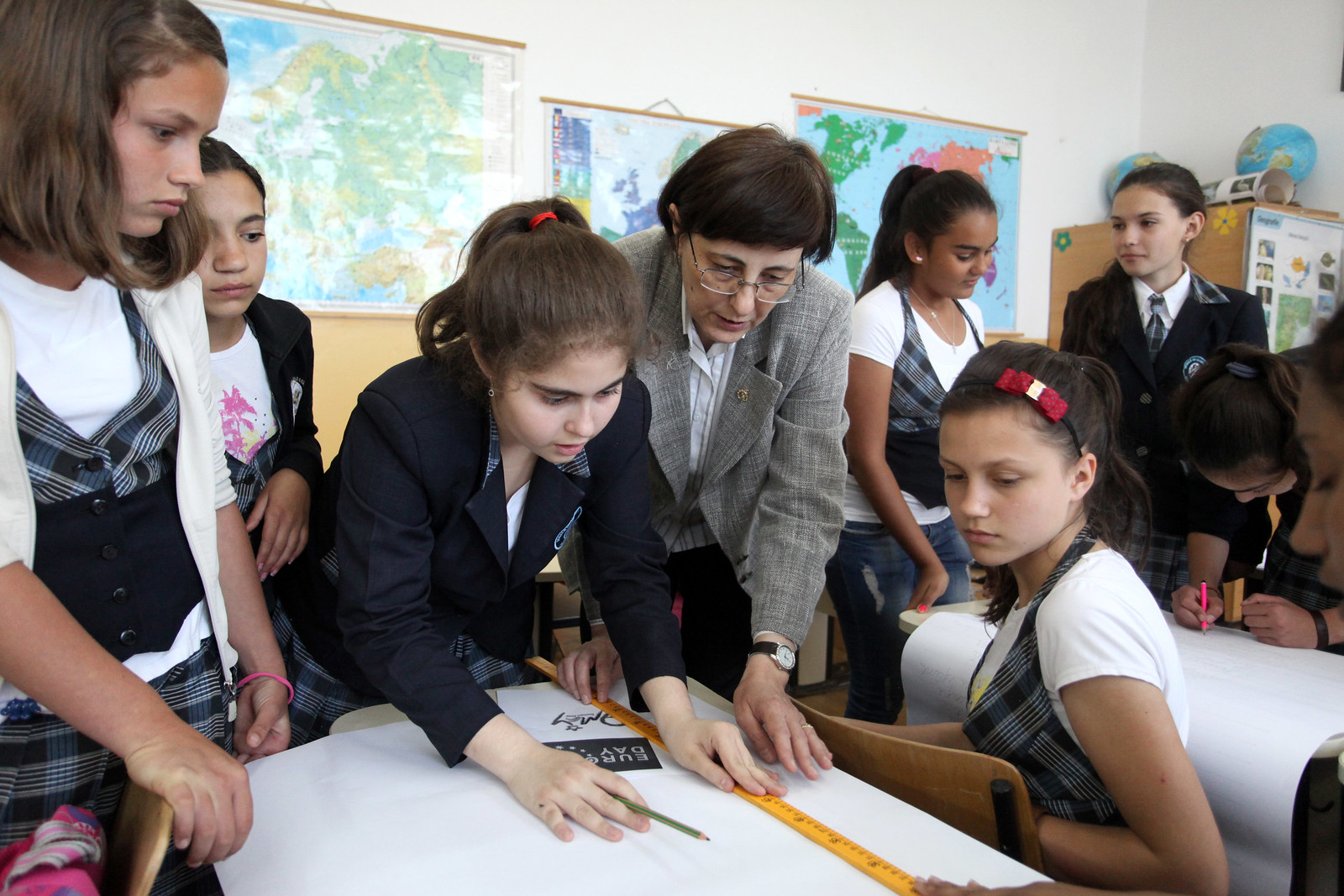I start this post by thanking Angela Towndrow, a fellow Aussie whom I met virtually via a mooc, and from whom I continue to draw insights on things related to education.
After reading my previous post Let’s get rid of the instructors!, Angela pointed me to the journal article Giving Teaching Back to Education: Responding to the Disappearance of the Teacher by Gert Biesta. And I’m glad she did.
Professor Biesta’s article is a response to the marginalisation of teaching in modern society, and a call for teachers to teach, to be allowed to teach, and to have the courage to teach.
The premise of the professor’s argument is that there is a difference between “education” and “learning”:
“…the point of education is never that children or students learn, but that they learn something, that they learn this for particular purposes, and that they learn this from someone. The problem with the language of learning and with the wider ‘learnification’ of educational discourse is that it makes it far more difficult, if not impossible, to ask the crucial educational questions about content, purpose and relationships. Yet it is in relation to these dimensions, so I wish to suggest, that teaching matters and that teachers should teach and should be allowed to teach. And it is also in relation to these dimensions that the language of learning has eroded a meaningful understanding of teaching and the teacher.”
It is this learnification of educational discourse that has rendered the words I cited in my previous post – “training”, “lecture”, “course” and “teaching” – dirty. And I must confess it gives me heart to find someone of Professor Biesta’s calibre in my corner (or more accurately, to find myself in his).

In describing our general mindshift from teaching to learning, Biesta tells the story of two English schools that, upon merging, no longer wanted to call themselves a “school”. So they named their merged entity Watercliffe Meadow: A Place for Learning. Beyond the deliciously Waughian nature of this name, Biesta objects to its semantics:
“…the language of learning, particularly in its constructivist form, has repositioned the teacher from someone who is at the heart of the educational process to one who literally stands at the sideline in order to facilitate the learning of his or her ‘learners.’
Some of the arguments that have contributed to the rise of the language of learning are not without reason – there is indeed a need to challenge authoritarian forms of education; the rise of the internet does raise the question as to what makes schools special; and, to a certain extent, it cannot be denied that people can only learn for themselves and others cannot do this for them (although this does not mean that there are no limits to constructivism).
However, the language of learning falls short as an educational language, precisely because, as mentioned, the point of education is never that students learn but that they learn something, for particular purposes and that they learn it from someone. The language of learning is unable to capture these dimensions partly because learning denotes a process that, in itself, is empty with regard to content and direction; and partly because learning, at least in the English language, is an individualistic and individualising term whereas the educational question – if, for the moment we want to phrase it in terms of learning – is always a matter of learning something from someone.
From this angle it is just remarkable, if not shocking, how much policy – but increasingly also research and practice – has adopted the empty language of learning to speak about education. Yet if this is indeed the only language available, then teachers end up being a kind of process-managers of empty and in themselves directionless learning processes.”
Ouch!
I certainly agree that the language of learning pushes the sage off the stage and recasts them as a guide on the side. But I feel compelled to point out that this does not in itself render the art of facilitation devoid of educational purpose. On the contrary, I see facilitation as a means of education. Assuming the teacher has in mind a certain something for his or her children to learn, then to “teach” may mean to stage the encounter indirectly – that is, to seed, scaffold, clarify and validate – as opposed to direct instruction.
Indeed, Biesta offers the most eminent of examples in Socrates:
“…when we look more carefully at Socrates we can already see that he is not just there to facilitate any kind of learning but that, through an extremely skilful process, he is trying to bring his students to very specific insights and understandings. Seen in this way, Socrates is actually an extremely skilful didactician, because he knows all too well that to just ‘rub it in’ is unlikely to convince his students about the things he wants to convince them of.”
Biesta goes on to suggest that that Socrates was a manipulative teacher, and I whole-heartedly agree. If there were no manipulation underpinning the Socratic method, then I dare say that sales people wouldn’t use it! Yet while facilitative teaching is by definition manipulative, I implore that it need not be deemed so in the negative sense. It is rather a manifestation of the teacher exercising his or her judgement in the context of the given situation.

To Biesta, it is teaching (not learning) that makes the school special. He sees teaching as a gift, and the giving of this gift as the raison d’être of the institution. So instead of thinking of a school as a place for learning, he prefers to think of it as a place for teaching.
But does this swing the pendulum too far back the other way?
Indeed I agree that we should think of a school as a place for teaching. As my rambling in Let’s get rid of the instructors! will attest, I very much advocate teaching under the right circumstances. However, just as the learnification of educational discourse devalues teaching, I believe the teacherfication of educational discourse devalues learning.
Notwithstanding the importance of our students learning something for particular purposes from someone, sometimes that “something” can not be taught because it hails from the future; which is a round-about way of saying that we need to teach our children how to learn so that we can future proof their education.
My understanding of “learning” in this sense is not empty and directionless because the teacher is there to guide and support the process. I contend that the role of the teacher can find the middle ground between the ultra-conservative view of teaching – whereby the curriculum is transmitted from state to child – and the neo-liberal view that would have us throw the curriculum out the window (except where it furthers its own agenda, of course). On this middle ground the teacher is empowered to work with the curriculum as he or she sees fit; whether that be via direct instruction, or facilitation, or perhaps even – sometimes – rhizomatic exploration.
So I advocate neither Watercliffe Meadow: A Place for Learning nor Watercliffe Meadow: A Place for Teaching. If learning skills are to be incorporated into the education that our schools give our children, then let’s call a spade a spade: Watercliffe School: A Place for Teaching and Learning.







